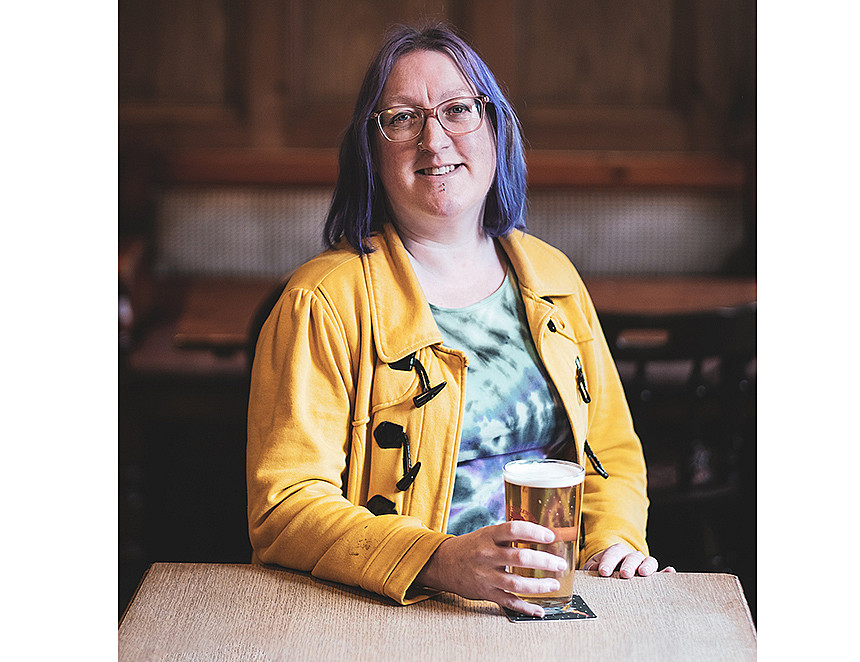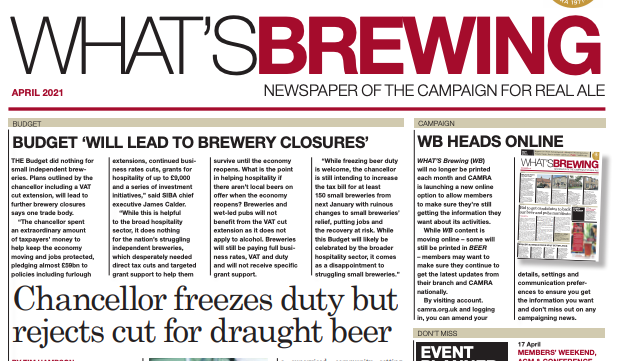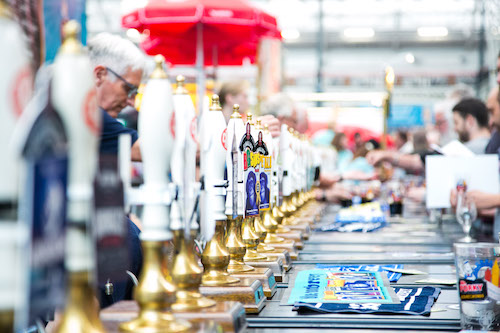Alcohol free: situation normal?

Like the introduction of an official CAMRA keg bar in 2019, this year has seen a momentous evolution at the Great British Beer Festival (GBBF). A formal low- and no-alcohol bar made its first appearance at the festival held in Birmingham.
There were 35 drinks available with an ABV of 0.5 per cent or lower, in bottle, keg and can. I’ve observed with interest the comings and goings at the Glan Yr Afon Bar, which is named after the historic pub in Gwynedd that was saved by the community and Hollywood star Matthew Rhys in 2023. A steady stream of patrons availed themselves of its wares. Most of the festival’s low- and no-drinks were concentrated on the Glan Yr Afon Bar although some appeared on brewery and speciality bars too.
There were dry drinkers, including a few well-known faces who dedicate their writing and social media to alcohol free beer. Then came the zebra stripers, who punctuate their regular beer drinking with the odd non-alcoholic (NA) version to keep things level through the session. There were also the curious onlookers, perhaps still yet to be converted, but at least they are taking the time to see what’s out there.
Does this mean that drinking alcohol-free beverages is now considered normal?
I think that it does. Attitudes have been steadily changing towards zero per cent drinking over the past 10 years, with a decided improvement in quality and variety sparking a sharper ascent in the last five. While there are still those who scoff “what’s the point in alcohol-free beer? Might as well drink water” (but don’t bat an eyelid at a decaffeinated coffee) on the whole, it feels like there has been a seed of change in our drinking culture.
GBBF provides an interesting arena for observing broad trends, but I think that proof of concept comes when you take a more random sample – looking at the behaviour of people who would not necessarily consider beer or cider to be one of their key interests, as festival attendees probably would, but who do enjoy the occasional tipple.
My local is a great place to watch the habits of this demographic. A managed pub under a reasonably sized pub company, this hostelry has a solid, but frankly uninspiring beer range in my eyes. But that selection is perfectly acceptable to most of its clientele, who aren’t self-proclaimed beer nerds, but are beer (or cider) drinkers. I run the quiz and once offered them a picture round composed of brewery logos. I was surprised how much they all struggled, even with the big brand names. Nobody identified Thornbridge correctly.
The pub offers a macro alcohol-free cider, a zero per cent stout (yes, that one) and a big-brand, low-alcohol lager. I’ve noticed during my weekly stint that nearly every table orders a minimum of one alcohol-free option in each round. Increasingly these are beers or cider, rather than a soft drink. Some are for designated drivers, but many, like me, live within easy walking distance. They choose zero per cent because they enjoy it.
Nobody bats an eyelid at a friend choosing to drink without alcohol. No sarcastic comments are made. One or two regulars who don’t participate in the quiz also order these beverages throughout the evening, whether they are alone or with friends.
At any given time, I would estimate 20 per cent of the punters in that pub are drinking low- or no-options and recent research suggests social acceptance of non-alcoholic drinks is indeed higher than ever. Dr Charles Spence, the professor of Experimental Psychology at Oxford University, published a study based on a Heineken-Ipsos survey in January 2025. It identified price, availability, choice and “low taste expectations” were previously barriers to people switching to alcohol-free alternatives, but increasingly those hurdles are being jumped. It would have been unheard of for a tied estate pub like mine to have three NA options behind the bar just a few years ago, for example.
The final barrier Dr Spence identified is social stigma and this is where I am, anecdotally, seeing a noticeable shift. In January, 51 per cent of respondents to the research survey said they had ended up drinking alcohol at social occasions when they said that they wouldn’t. “Such behaviour hints at the historic role of alcohol in connection to celebratory traditions and rituals,” wrote Dr Spence. It’s a pressure we’ve all felt. We are accustomed to celebrating and commiserating with alcohol and it can feel like a reflex to buy someone a drink to punctuate both good times and bad.
It’s refreshing to see that both the beer connoisseurs and the (in the nicest possible sense) beer illiterate are starting to enjoy alcohol-free choices, and more importantly not feeling it is their right to comment on other peoples’. The Mrs Doyle reflex is slowly diminishing – when someone asks for a 0 per cent lager their request is not immediately followed by an overwhelming chorus of “have a proper drink, go on, go on, go on…” And that can only be a positive thing – for the health of the nation and for its mental health too.
If you witness someone ordering an alcohol-free option and you find an urge rises to make a negative comment, then please remember this article and keep your opinions to yourself. There are a huge number of reasons why people choose zero per cent and they don’t have to justify a single one of them.

 view archive
view archive
 view events
view events